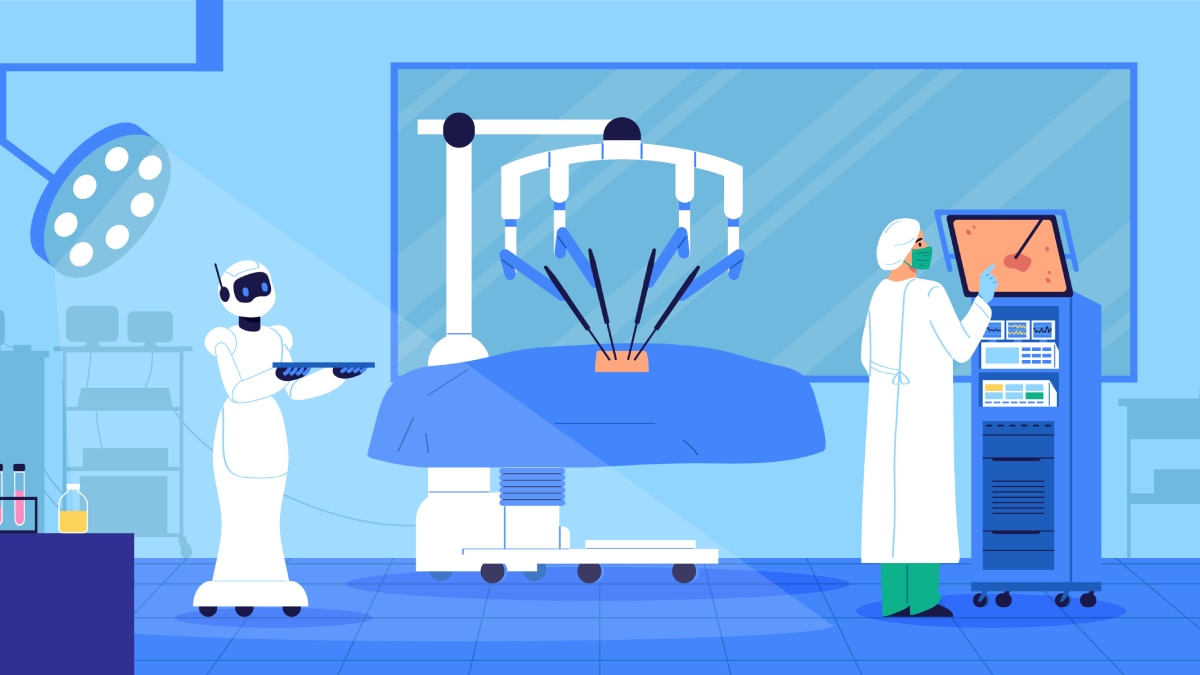Woxsen University in Hyderabad has taken a bold step into the future of healthcare by developing an AI-Driven Bio-Induced Necrobotic System — a next-gen solution for robotic-assisted surgery that doesn’t just push medical boundaries but also tackles the sustainability crisis head-on. Nature Meets Technology in the OR What sets this innovation apart is its choice of materials. Instead of relying on conventional synthetic components, the system incorporates biodegradable actuators made from spider exoskeletons and silk fibers.
These materials are not only biocompatible but also significantly reduce medical waste, marking a move toward carbon-neutral surgeries. Designed for high-precision, minimally invasive procedures, the system holds promise across various delicate specialties such as neurosurgery, ophthalmology, and cardiovascular microsurgery. In preliminary assessments, it has demonstrated a 70 per cent boost in precision and 50 per cent less tissue damage, paving the way for improved patient recovery and reduced surgical risks.

Telesurgery Gets Smarter — and Greener A core feature of the system is its AI-powered telesurgery capability. Thanks to adaptive machine learning and real-time imaging, surgeons can now operate remotely with astonishing precision. This opens doors to expert-level surgeries in rural or underserved areas, where specialist care is often hard to access.
The technology tackles long-standing hurdles in remote surgeries, such as latency and motion accuracy using predictive modelling and real-time responsiveness. It even includes manual override options, ensuring that human expertise remains at the helm when needed. Training Tomorrow’s Surgeons Today Woxsen University isn't stopping at just innovation.
The institution is rolling out a certification programe in AI-Driven Surgical Robotics, featuring simulations, hands-on workshops, and mentorship from leading hospitals. This initiative aims to equip surgeons with the skills to harness AI for more sustainable, efficient care. Woxsen’s approach reflects a deeper mission to reimagine healthcare for a better tomorrow.
“At Woxsen, we are building the future of surgery — where sustainability, artificial intelligence, and human expertise converge to redefine patient care. This system is more than a technological milestone; it’s a vision of how healthcare can evolve responsibly and equitably,” said Dr. Hemachandran K, Director of the AI Research Centre.
The university is currently collaborating with hospitals and research institutions to conduct clinical trials, evaluate biocompatibility, and collect performance data for regulatory approvals. Pilot programmes are expected to begin soon, marking the early stages of what could become a global benchmark in sustainable surgical innovation. As the global healthcare sector grapples with growing environmental concerns and a demand for precision, Woxsen University’s necrobotic system could be the prototype of a new surgical era — where cutting-edge doesn't cost the Earth.
Also read Hyderabad University Unveils AI System To Reduce Mental Fatigue, Boost Performance.
Surgical Tech Gets A Sustainable Makeover: Hyderabad University Unveils AI-Driven Necrobotic Breakthrough

Woxsen University in Hyderabad has taken a bold step into the future of healthcare by developing an AI-Driven Bio-Induced Necrobotic System — a next-gen solution for robotic-assisted surgery that doesn’t just push medical boundaries but also tackles the sustainability crisis head-on.Nature Meets Technology in the ORWhat sets this innovation apart is its choice of materials. Instead of relying on conventional synthetic components, the system incorporates biodegradable actuators made from spider exoskeletons and silk fibers. These materials are not only biocompatible but also significantly reduce medical waste, marking a move toward carbon-neutral surgeries.Designed for high-precision, minimally invasive procedures, the system holds promise across various delicate specialties such as neurosurgery, ophthalmology, and cardiovascular microsurgery. In preliminary assessments, it has demonstrated a 70 per cent boost in precision and 50 per cent less tissue damage, paving the way for improved patient recovery and reduced surgical risks.Telesurgery Gets Smarter — and GreenerA core feature of the system is its AI-powered telesurgery capability. Thanks to adaptive machine learning and real-time imaging, surgeons can now operate remotely with astonishing precision. This opens doors to expert-level surgeries in rural or underserved areas, where specialist care is often hard to access.The technology tackles long-standing hurdles in remote surgeries, such as latency and motion accuracy using predictive modelling and real-time responsiveness. It even includes manual override options, ensuring that human expertise remains at the helm when needed.Training Tomorrow’s Surgeons TodayWoxsen University isn't stopping at just innovation. The institution is rolling out a certification programe in AI-Driven Surgical Robotics, featuring simulations, hands-on workshops, and mentorship from leading hospitals. This initiative aims to equip surgeons with the skills to harness AI for more sustainable, efficient care.Woxsen’s approach reflects a deeper mission to reimagine healthcare for a better tomorrow. “At Woxsen, we are building the future of surgery — where sustainability, artificial intelligence, and human expertise converge to redefine patient care. This system is more than a technological milestone; it’s a vision of how healthcare can evolve responsibly and equitably,” said Dr. Hemachandran K, Director of the AI Research Centre.The university is currently collaborating with hospitals and research institutions to conduct clinical trials, evaluate biocompatibility, and collect performance data for regulatory approvals. Pilot programmes are expected to begin soon, marking the early stages of what could become a global benchmark in sustainable surgical innovation.As the global healthcare sector grapples with growing environmental concerns and a demand for precision, Woxsen University’s necrobotic system could be the prototype of a new surgical era — where cutting-edge doesn't cost the Earth.














